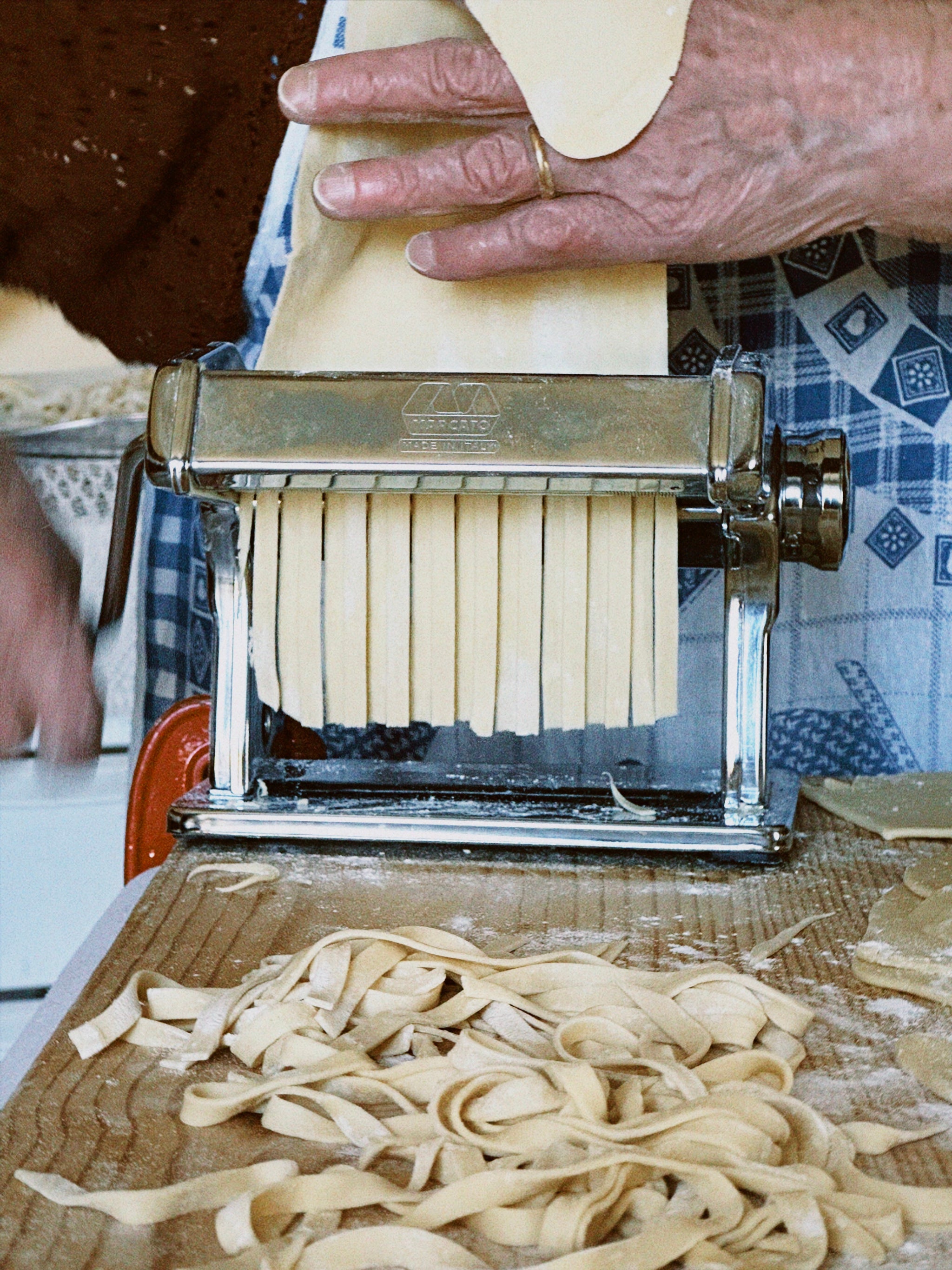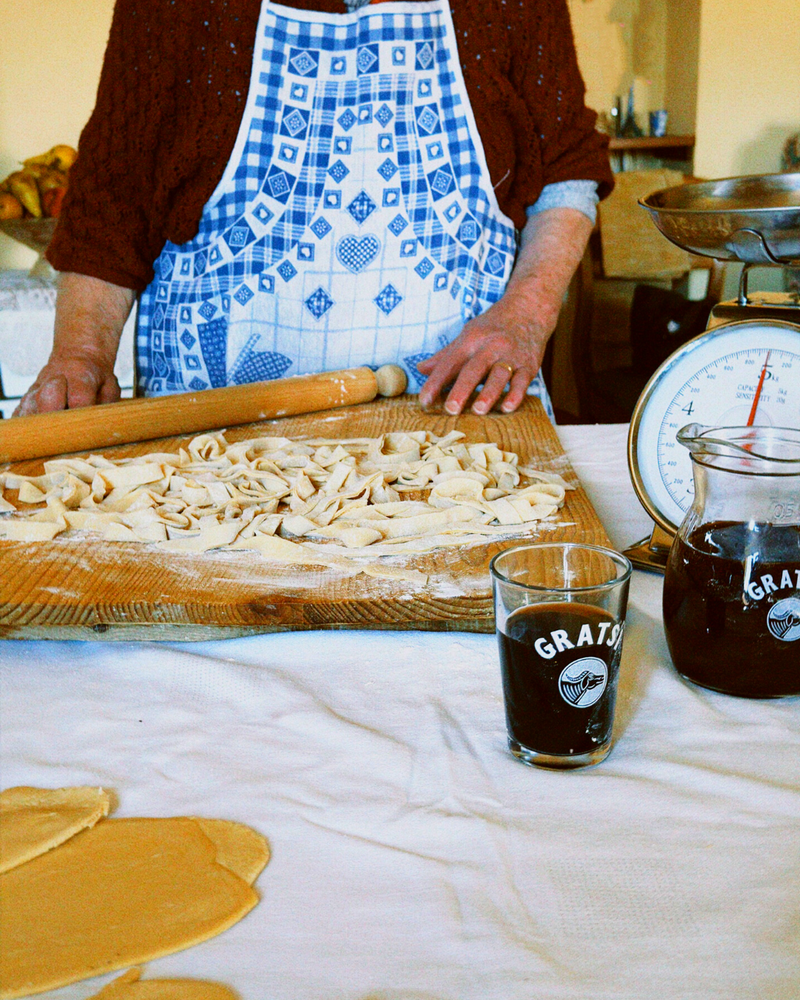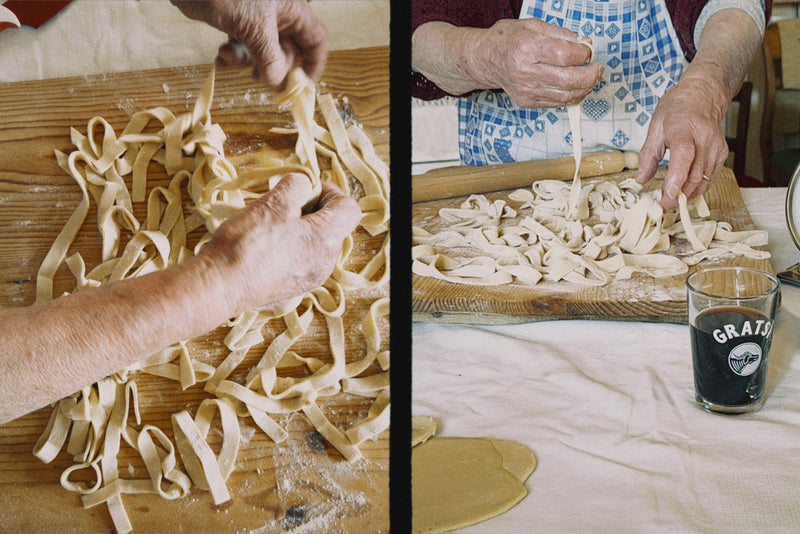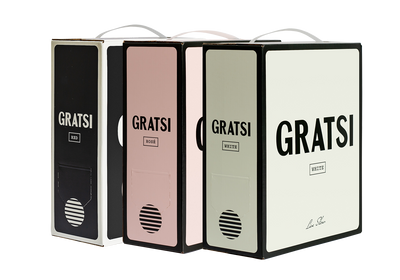Le Tagliatelle

HOMEMADE PASTA
Le Tagliatelle
Making homemade pasta dates back generations, and for Italians this word means home, family and tradition.
By Gianina Rose
|
March 17, 2023
Le Tagliatelle
By Gianina Rose
Instructions
TOTAL TIME
45 Minutesservings

If we own a pastry board to knead the dough we place it on the table putting a dish towel underneath so that it does not slip, otherwise we can put the flour directly on the surface we have available or in a bowl.
We start by pouring the flour "in a well" making a hole in the center where we will put the 4 eggs and incorporate them into the flour with a fork.
Once the liquid part has been absorbed we can knead with our hands vigorously for about 10 minutes, this will give elasticity to the dough and we will obtain a compact and smooth dough.

Prepare Clam Sauce:
In a preheated large skillet, add 9 tablespoons of extra virgin olive oil. Stir in the thinly sliced garlic and chili flakes. Once the garlic turns translucent, add the 1 pound of fresh clams. Pour in the Gratsi White Wine and cover with a lid. Allow to steam for 3-4 minutes. Remove the lid and add in 2 cans of baby clams (drain the clam juice from the cans and reserve 1 can of clam juice for the sauce) add in some parsley and cover with lid steam for another 3-4 minutes.

One of the most important steps in this simple recipe is resting; the dough ball should be wrapped with plastic wrap so that it does not dry out and left to rest at room temperature for about half an hour.
After resting, the dough is soft, smooth and elastic, ready to be rolled out by hand on a lightly floured pastry board, or with the pasta machine.
If we use a rolling pin, we proceed by dividing the ball into smaller parts, flattening it with our hands and flouring it so that the dough does not stick to the rolling pin.
We roll out the loaf with a rolling pin, obtaining a sheet of a few millimeters: the thickness depends on how much you love tagliatelle. If you prefer to make them thin, considering that they will increase slightly in volume when cooking, give the sheet a thickness of 1 mm. If you love more rustic tagliatelle, depending also on the sauce, you can make a sheet of even 2 mm.
At this point we wrap the pastry sheet, folding it over on itself, and with a sharp knife cut the noodles at a distance of 1 cm from each other.
If we use the pasta machine, we take the flattened piece of dough and pass it several times through the rollers, starting with a greater thickness and then rotating the wheel decreasingly until the desired thickness (1-2 mm). To give the dough a more regular shape after the first pass, we fold the two edges of the sheet towards the center.

Insights/Tips:
- Salt is not put in the preparation of the dough to avoid white streaks on the pastry.
- Tradition calls for using 1 egg for every 100 g of dough, but a lighter dough can be obtained by using 1 less than the indicated amount (3 instead of 4).
- The resulting dough can be frozen by placing the tagliatelle spaced on a tray in the freezer and then transferring them after a couple of hours to reusable freezer bags.





